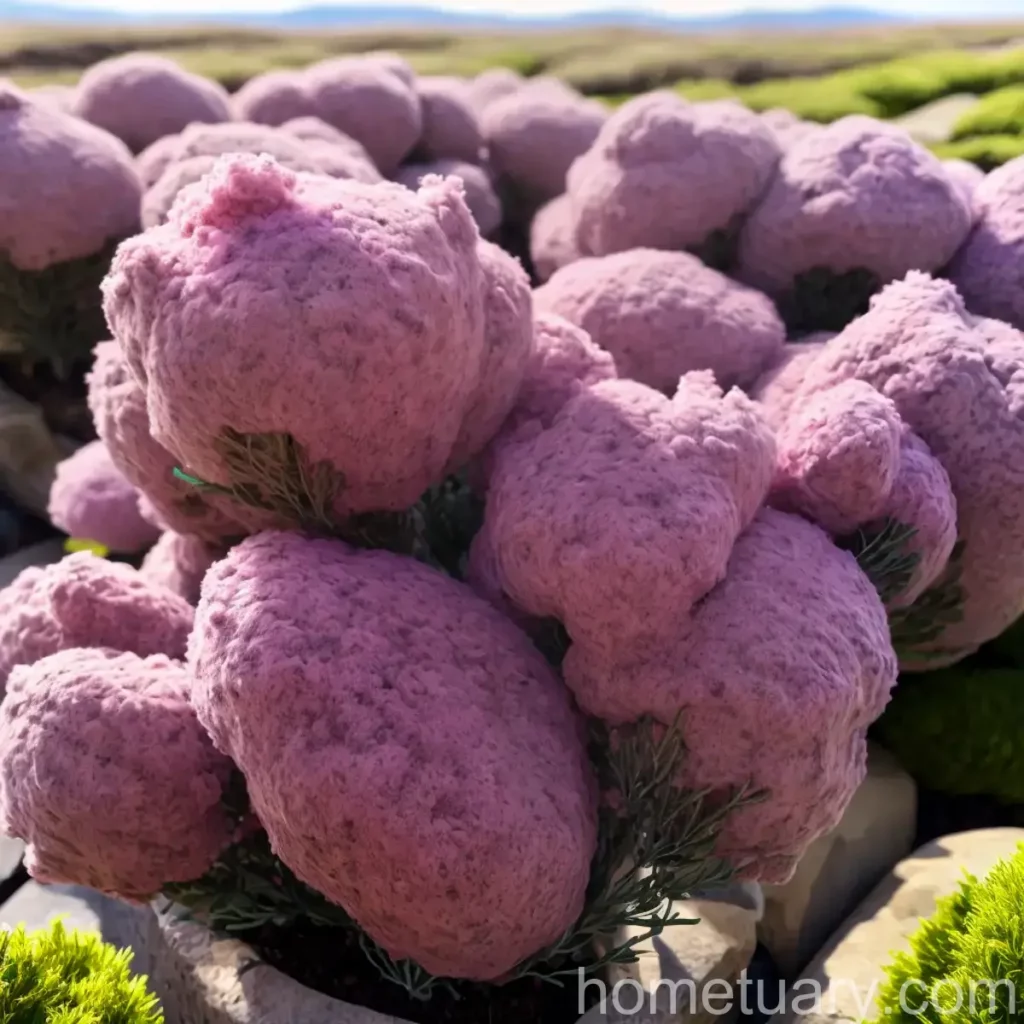Scotch Heather (Calluna vulgaris): The Ultimate Plant Care Guide

Plants have always held a special place in our lives, providing us with food, shelter, and beauty. One such plant that has been cherished for centuries is the Scotch heather, scientifically known as Calluna vulgaris. This beautiful, low-growing perennial is valued for its stunning foliage and delicate blooms, making it a popular choice for gardeners and landscapers alike.
In this comprehensive guide, we will delve into the world of Scotch heather, exploring its culture, uses, care requirements, and much more. Whether you are a beginner or an experienced gardener, this article will equip you with the knowledge and insights you need to cultivate and enjoy the beauty of Calluna vulgaris in your own garden or landscape.
What is Scotch Heather (Calluna vulgaris)?
Scotch heather, or Calluna vulgaris, is a small, evergreen shrub native to Europe and parts of Asia. It belongs to the family Ericaceae and is renowned for its vibrant display of flowers and foliage. The plant typically reaches a height of 20 to 50 centimeters and features tiny, needle-like leaves that change color with the seasons, ranging from shades of green in spring and summer to fiery reds and oranges in autumn.
The dainty, bell-shaped flowers of Scotch heather bloom in late summer to early autumn, creating a spectacle of colors from white and pink to purple. These delicate blossoms attract pollinators, such as bees and butterflies, adding to the plant’s allure and ecological value.
Key Takeaways – Scotch Heather (Calluna vulgaris)
Before diving into the specifics of Scotch heather care, let’s take a look at the key takeaways for cultivating this exquisite plant.
Culture
- Hardiness Zones: Scotch heather is suited to USDA Hardiness Zones 4 to 7, making it tolerant of cooler temperatures and suitable for a wide range of climates.
- Growth Habit: Low-growing, mounding shrub with a spreading nature.
- Lifespan: Calluna vulgaris can live for many years with proper care, forming dense mats of foliage over time.
Uses
- Ornamental: Valued for its ornamental qualities, Scotch heather is used in gardens, landscaping, and floral arrangements.
- Erosion Control: Its dense growth habit makes it effective for controlling erosion on slopes and embankments.
- Wildlife Habitat: Provides habitat and food for pollinators and other beneficial insects.
Water
- Moisture Needs: Requires consistently moist, well-draining soil, especially during the establishment phase.
Sunlight
- Sun Requirements: Prefers full sun to partial shade, thriving in locations with ample sunlight.
Fertilizer
- Nutrient Needs: Thrives in nutrient-poor soils and typically does not require regular fertilization.
Soil
- Soil Type: Thrives in acidic, well-drained soils, making it suitable for gardens with acidic soil conditions.
- pH Level: Prefers soil with a pH range of 4.5 to 5.5.
Pruning
- Pruning Schedule: Benefits from light pruning after flowering to maintain its compact shape and promote new growth.
Propagation
- Propagation Methods: Can be propagated from seeds, cuttings, or by division.
Container Popularity
- Container Gardening: Well-suited for container gardening, allowing it to be grown on patios, decks, or in small spaces.
Common Diseases
- Disease Resistance: Generally resistant to major diseases but can be susceptible to root rot in poorly drained soils.
Disease Diagnosis
- Symptoms: Yellowing foliage, wilting, and stunted growth are indicative of potential diseases.
Common Pests
- Pest Resilience: Relatively free from pest infestations, although it may attract some aphids and spider mites.
Botanist’s Tips
- Naturalizing: Scotch heather looks stunning when planted en masse, creating a vibrant carpet of color in the landscape.
- Companion Planting: Pair with other acid-loving plants and heathland species for a cohesive garden design.
Fun Facts
- Folklore and Mythology: Has associations with folklore and traditional uses in various cultures, adding to its mystique.
- Seasonal Changes: Exhibits striking color changes throughout the year, making it an ever-changing landscape feature.
With these key takeaways in mind, let’s explore the detailed care requirements and best practices for cultivating Scotch heather in home gardens and landscapes.
Scotch Heather Care
Caring for Scotch heather involves understanding its specific preferences and adapting to its cultural requirements. From planting to maintenance, each aspect of care contributes to the overall health and vitality of the plant. Let’s dive into the details of Scotch heather care, covering aspects such as planting, soil conditions, sunlight requirements, and more.
Planting Calluna vulgaris
When considering the planting of Calluna vulgaris, it’s essential to choose a suitable location and provide the right growing conditions to ensure its long-term success. Here’s a step-by-step guide to planting Scotch heather in your garden or landscape:
-
Site Selection: Choose a location with well-drained, acidic soil and ample sunlight. Look for a spot with good air circulation to prevent fungal diseases.
-
Soil Preparation: Prepare the planting area by incorporating organic matter, such as peat moss, into the soil to improve drainage and acidity. Ensure that the soil pH falls within the preferred range of 4.5 to 5.5.
-
Planting Depth: Dig a hole that is slightly wider and no deeper than the root ball of the Scotch heather. Ensure that the top of the root ball is level with the surrounding soil surface.
-
Spacing: Space multiple plants at least 18 to 24 inches apart to allow for proper air circulation and future growth.
-
Watering: Once planted, water the Scotch heather thoroughly to settle the soil and provide essential moisture to the newly transplanted shrub.
-
Mulching: Apply a layer of organic mulch, such as pine bark or wood chips, around the base of the plant to conserve soil moisture and suppress weed growth.
-
Establishment: Monitor the newly planted Scotch heather closely during the establishment period, ensuring that the soil remains consistently moist but not waterlogged.
By following these planting guidelines, you can set the stage for healthy growth and vigor in your Scotch heather plants. Keep in mind that proper planting techniques contribute significantly to the plant’s resilience and overall performance.
Growing Scotch Heather

The growth and development of Scotch heather are influenced by various factors, including sunlight, water, and soil conditions. Understanding how to support the growth of Calluna vulgaris is crucial for maintaining its beauty and vigor throughout the seasons. Here’s a closer look at the essential aspects of growing Scotch heather:
Sunlight Requirements for Scotch Heather
Scotch heather thrives in locations with ample sunlight, making it well-suited for sunny areas in the garden or landscape. Providing at least 6 to 8 hours of direct sunlight per day is ideal for promoting robust growth and vibrant blooms. In regions with hot summers, afternoon shade can offer protection from intense sunlight, preventing leaf scorch and reducing water stress.
Watering Needs for Calluna vulgaris
Moisture management is key to the health of Scotch heather, particularly during the establishment phase and periods of drought. Here are some guidelines for watering Calluna vulgaris effectively:
-
Establishment Phase: Water newly planted Scotch heather regularly to keep the root zone consistently moist. Monitor soil moisture, especially during hot and dry weather, and adjust the watering frequency as needed.
-
Mature Plants: Once established, Scotch heather plants generally require moderate moisture. Water deeply but infrequently, allowing the soil to partially dry out between waterings to prevent waterlogged conditions.
-
Avoid Waterlogging: Ensure that the planting site has well-drained soil to prevent waterlogging, which can lead to root rot and other issues.
By providing the right balance of moisture and sunlight, you can create optimal growing conditions for Scotch heather, promoting healthy foliage and abundant flowering.
Fertilizing Scotch Heather
Scotch heather has modest nutrient requirements and typically thrives in nutrient-poor soils, characteristic of its native heathland habitats. Excessive fertilization can lead to lush, soft growth that is more susceptible to pests and diseases. Therefore, here are some considerations for fertilizing Calluna vulgaris:
-
Minimal Fertilization: In most cases, Scotch heather does not require regular fertilization. Limit feeding to once a year in early spring using a balanced, slow-release fertilizer applied at half the recommended strength.
-
Nutrient Deficiencies: Monitor the plant for signs of nutrient deficiencies, such as yellowing leaves or reduced growth, and adjust fertilization as necessary.
-
Organic Amendments: Consider incorporating organic matter, such as compost or well-rotted manure, into the soil during planting to provide a gentle nutrient boost and improve soil structure.
By practicing mindful fertilization and soil enrichment, you can support the natural resilience and vigor of Scotch heather, promoting sustainable growth without the need for excessive inputs.
Soils for Calluna vulgaris
Understanding the soil preferences of Scotch heather is essential for creating a supportive growing environment that mimics its native habitat. Calluna vulgaris thrives in acidic, well-drained soils, characteristic of heathlands and moorlands. Here’s a closer look at the soil requirements for cultivating Scotch heather:
Soil Type
Calluna vulgaris prefers sandy or loamy soils with good drainage properties. These soil types allow excess water to percolate easily, preventing waterlogged conditions that can be detrimental to the plant’s health. Amending heavy clay soils with organic matter, such as peat moss or pine bark, can improve drainage and create a more hospitable growing medium for Scotch heather.
pH Level
Acidity is a crucial factor in the successful cultivation of Scotch heather, as it exhibits a preference for acidic soils with a pH range of 4.5 to 5.5. Testing the soil pH using a reliable soil testing kit is recommended, allowing you to make informed decisions about pH modification through the addition of acidic amendments, such as elemental sulfur or acidic fertilizers.
Soil Amendment
Before planting Scotch heather, consider incorporating organic matter, such as peat moss or well-rotted pine needles, into the soil to lower the pH and improve soil structure. These amendments not only create a more acidic environment but also enhance moisture retention and aeration, benefiting the overall health of the plant.
By understanding and addressing the specific soil needs of Calluna vulgaris, you can establish a thriving foundation for the plant and promote robust growth and vitality.
Pruning Calluna vulgaris

Pruning plays a significant role in maintaining the compact form and beauty of Scotch heather, ensuring that the plant remains tidy and vigorous throughout the year. Here’s a guide to pruning Calluna vulgaris effectively:
-
Timing: Perform light pruning on Scotch heather after the flowering period, typically in late autumn or early spring. Avoid heavy pruning, as this can weaken the plant and reduce flowering in the following season.
-
Deadheading: Remove spent flowers and any discolored or damaged foliage to promote a neat appearance and encourage new growth.
-
Shaping: Trim back any excessively long or straggly growth to maintain a rounded, mounding shape. Aim to balance the overall appearance of the plant while preserving its natural form.
-
Rejuvenation: In the event of overgrown or leggy plants, consider rejuvenation pruning by cutting back one-third of the oldest stems to ground level, encouraging new growth from the base of the plant.
By incorporating regular, light pruning into your maintenance routine, you can enhance the vitality and visual appeal of Scotch heather, promoting a well-groomed and floriferous display year after year.
Propagating Calluna vulgaris
Propagating Scotch heather allows you to expand your plant collection and share the beauty of Calluna vulgaris with others. Several methods can be employed to propagate this captivating plant, each offering its own benefits and considerations. Here are the primary propagation methods for Calluna vulgaris:
-
Seed Propagation: Collect ripe seed capsules from the Scotch heather plant and sow the seeds in a well-draining, acidic seed starting mix. Maintain consistent moisture and warmth to encourage germination, and transplant the seedlings once they develop sufficient root systems.
-
Cutting Propagation: Take semi-hardwood cuttings from healthy, actively growing shoots of Scotch heather in mid to late summer. Remove the lower foliage and dip the cut ends in a rooting hormone before planting the cuttings in a propagation medium. Provide the necessary warmth and humidity for root development, and transplant the rooted cuttings once they are well-established.
-
Division: Established Scotch heather plants can be divided every few years to rejuvenate the clump and create new plants. Carefully dig up the plant and divide it into smaller sections, each containing a portion of the root system and several shoots. Replant the divisions in suitable locations, ensuring proper care during the establishment phase.
By exploring these propagation methods, you can expand your garden with an abundance of Scotch heather plants, creating stunning displays and sharing the beauty of Calluna vulgaris with others.
Container Gardening with Calluna vulgaris

Scotch heather’s compact size and vibrant displays make it an excellent candidate for container gardening, offering versatility and visual appeal in various outdoor settings. Here are some key considerations for successful container gardening with Calluna vulgaris:
Container Selection
Choose well-draining containers with ample drainage holes to prevent waterlogging and root rot. Terracotta, ceramic, or wooden containers are suitable choices, providing both functionality and aesthetic appeal.
Potting Mix
Select a high-quality, acidic potting mix designed for acid-loving plants, or create a custom mix using ingredients such as peat moss, pine bark, and perlite. This ensures that the soil pH and drainage properties align with the preferences of Scotch heather.
Placement
Position the containers in locations with full sun to partial shade, providing the plants with adequate sunlight for healthy growth and flowering. Consider grouping multiple containers to create a cohesive display of Scotch heather’s colorful foliage and blooms.
Watering and Maintenance
Monitor the moisture levels in the containers, keeping the soil consistently moist but not waterlogged. Water deeply, allowing excess water to drain freely from the containers to prevent waterlogged conditions. Additionally, incorporate light pruning and deadheading into the maintenance routine to uphold the appearance and vitality of the plants.
By embracing container gardening, you can showcase the beauty of Scotch heather in a versatile and eye-catching manner, whether on patios, decks, or balconies, adding a touch of elegance to outdoor spaces.
Popularity of Scotch Heather
The popularity of Scotch heather, or Calluna vulgaris, extends far and wide, thanks to its captivating beauty, ease of care, and diverse applications in garden and landscape settings. Let’s explore the factors contributing to the widespread popularity of Scotch heather:
Ornamental Allure
Scotch heather’s enchanting combination of vibrant foliage and delicate blooms makes it a sought-after choice for gardeners and landscapers looking to introduce color and texture into their designs. The ever-changing hues of the foliage, coupled with the profusion of flowers, offer visual interest throughout the year, attracting admirers and enthusiasts alike.
Wildlife Habitat
The ecological value of Scotch heather as a nectar source for pollinators, such as bees and butterflies, contributes to its popularity among wildlife-conscious gardeners. By supporting beneficial insects and other wildlife, Scotch heather enhances the overall biodiversity of garden and natural landscapes, fostering a sustainable and harmonious environment.
Cultural Significance
Scotch heather has cultural significance in various regions, with historical uses, folklore, and traditional medicinal properties adding to its intrigue and charm. Its presence in traditional gardens, as well as its use in seasonal celebrations and rituals, has helped embed Scotch heather in the cultural fabric of many communities.
Versatile Applications
With applications ranging from ground covers and erosion control to container gardening, Scotch heather offers versatility and adaptability in various landscape scenarios. Its use in rock gardens, wildflower meadows, coastal landscapes, and cottage gardens demonstrates its ability to thrive in diverse environments, expanding its appeal and practicality.
Ease of Cultivation
The relative ease of cultivating Scotch heather, coupled with its adaptability to various soil types, makes it an accessible and rewarding plant for both novice and experienced gardeners. Its tolerance of cooler climates and resilience to challenging growing conditions further enhances its appeal as a low-maintenance yet high-impact ornamental.
By understanding the factors contributing to the popularity of Scotch heather, we can appreciate its widespread appeal and diverse uses, nurturing its presence in garden and landscape settings for generations to come.
Common Diseases and Pests
While Scotch heather is generally resilient and low-maintenance, it can be susceptible to certain diseases and pest infestations under unfavorable conditions. Understanding the common issues that may affect Calluna vulgaris enables proactive management and preventive measures to ensure the plant’s health and longevity.
Common Diseases
Root Rot
Excessive moisture and poorly drained soils can lead to root rot in Scotch heather, causing the roots to decay and compromising the plant’s ability to absorb water and nutrients. Symptoms include wilting, yellowing foliage, and stunted growth. To prevent root rot, ensure that the planting site has well-drained soil and avoid overwatering.
Botrytis Blight
Botrytis blight, or gray mold, can affect Scotch heather during periods of high humidity and wet conditions. This fungal disease manifests as grayish-brown lesions on foliage, often leading to the collapse of affected plant parts. Practices such as providing proper airflow, avoiding overhead watering, and removing infected plant material can help manage and prevent Botrytis blight.
Disease Diagnosis
Diagnosing potential diseases in Scotch heather involves observing the plant for symptoms of stress, discoloration, or abnormal growth. Yellowing or browning of foliage, wilting, and the presence of mold or mildew can indicate underlying disease issues. Regular monitoring and prompt intervention aid in early detection and effective treatment of potential diseases.
Common Pests
Aphids
Aphids may occasionally infest Scotch heather, feeding on the plant’s sap and causing damage to the foliage. These small, soft-bodied insects can be controlled through methods such as insecticidal soaps, horticultural oils, or natural predators, minimizing their impact on the plant.
Spider Mites
Spider mites are tiny pests that can affect Scotch heather, especially in hot and dry conditions. Their feeding activity results in stippling, webbing, and discoloration of the foliage. Measures such as increasing humidity, applying horticultural oils, and using predatory mites can help manage spider mite infestations effectively.
Understanding the potential diseases















